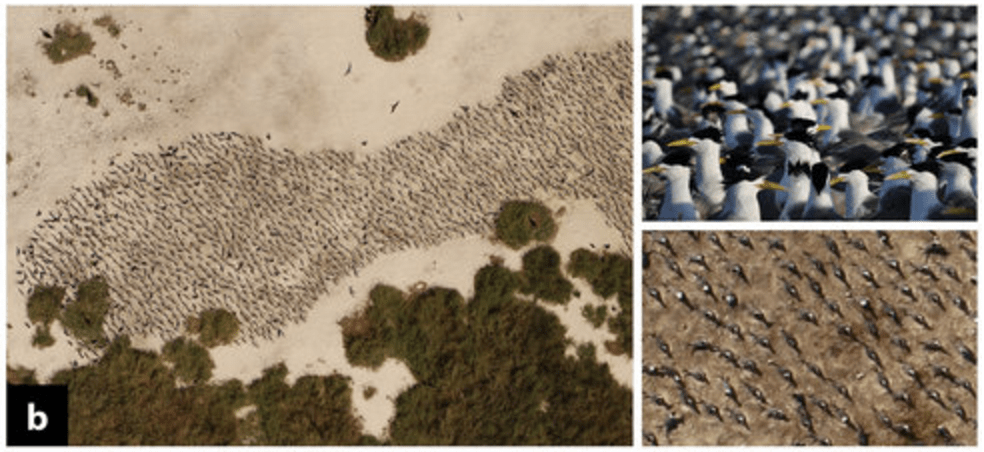Despite the fact that birds have publicly come out against the recent influx of drones moving in to their aerial domain, a new study has found UAVs are actually tremendously beneficial when it comes to monitoring their population.
Published Thursday in the Scientific Reports Journal by researcher from Monash University in Melbourne, Australia, the study has found drones are much more precise than human eyeballs when making physical counts to measure populations, specifically in tropical and polar environments.
The study found aerial stills “reduces the likelihood of missed counts due to topography and birds obscuring the [physical] counters’ line of sight,” and as a result, the population counts were able to be broken into smaller subsets and counted more carefully and methodically providing larger end counts with significantly smaller variances.
In other words, a bird’s-eye-view of a population provides a more manageable way to make counts and yields a much more consistent measurement.
Extrapolations and measurements over time can then be drawn and compared so, in the end, drones can increase the accuracy of measured population trends.
The group expects this same benefit “to extend to other animal groups and geographic contexts….Our findings suggest that population estimates using UAVs could be a powerful new tool in the ecologist’s tool kit for precision wildlife monitoring.”
“It’s highly likely that in the future, drones will be used to monitor populations of birds and animals, especially in inaccessible areas where on the ground surveying is difficult or impossible,” Dr Rohan Clarke explained. “This opens up exciting new possibilities when it comes to more accurately monitoring Earth’s ecosystems.”
Alan is serial entrepreneur, active angel investor, and a drone enthusiast. He co-founded DRONELIFE.com to address the emerging commercial market for drones and drone technology. Prior to DRONELIFE.com, Alan co-founded Where.com, ThinkingScreen Media, and Nurse.com. Recently, Alan has co-founded Crowditz.com, a leader in Equity Crowdfunding Data, Analytics, and Insights. Alan can be reached at alan(at)dronelife.com
